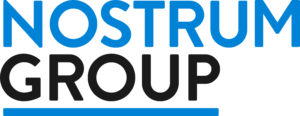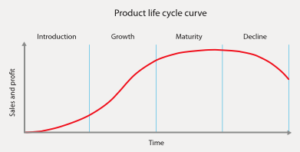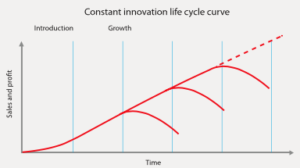Richard Carter is Chief Executive at Nostrum Group, a FinTech firm which has featured in the Sunday Times’ top 100 fastest growing technology businesses in 2014 and 2015.
Nostrum has also been named in the London Stock Exchange’s 1000 Companies to Inspire Britain for the last two years.
Having worked with Whitecap since 2014, Nostrum featured in our recent white paper How to create and deliver an agile strategy, which revealed that business leaders find it increasingly difficult to develop and implement a business strategy.
Richard Carter says a challenge for every business is predicting the future and its impact on business strategy – particularly for technology businesses:
“It can be extremely hard to plan three or five years ahead in business. The rate of change is dramatic across the business spectrum and that is amplified in the technology sector. I am happy to share my thoughts on how you can create a long-term strategy when constrained by an uncertain future.
In my own business, we have a long term strategy to build profitable, sustainable market share in the UK and move further afield.
 We are doing that by focusing on developing software that enables our clients to offer credit cheaper, faster and safer, and we are aiming to make that software the industry standard within four to five years.
We are doing that by focusing on developing software that enables our clients to offer credit cheaper, faster and safer, and we are aiming to make that software the industry standard within four to five years.
Understand your customer and shape a strategy around them
Despite having very formal processes for all other aspects of the business, we don’t have a formal process for developing a strategy. Our core proposition, to be a provider of loan management technology to banks, finance companies and retail brands, will remain unchanged but the key to our strategy is to stay very close to the end customer.
We make sure we understand who is using our products and how they use them. By understanding that, we can shape our strategy and ensure we develop software customers want to use.
Putting innovation at the heart of the strategy

We all know the accepted graph for the life cycle of a product – a slow start with the visionaries, followed by rapid growth as more clients come on board, a plateau as the product matures and then decline as the product reaches obsolescence.
What we aim to do is create new functionality on each software upgrade, so the product never becomes obsolescent – this means constant innovation. We have to produce products that satisfy the strategy without damaging recurring revenue or losing the customer.
Keeping a dynamic strategy as businesses grow
Our business is growing strongly and that brings new challenges as we continue to develop our strategy for the future. With a larger company comes more and more formal processes – that will also apply to the way a strategy is developed
However, the big challenge is to hang on to the dynamic way we look at opportunities and flex the strategy to match them. It’s really important that you don’t stifle your ability to move quickly on new opportunities as you become more corporate.”
If you are involved in the fintech sector, you may be interested in attending our event FinTech North on 26th April 2017. Read more about it here, or alternatively book your place.

